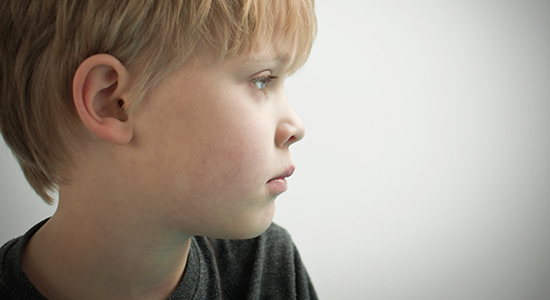
Oct. 19, 2016 – There is no role for lawyers more important or with more potential influence than that of the guardian ad litem (GAL) in a contested custody and placement case. This role affects the future well-being of children, parental relationships, and family systems. The GAL is the court-appointed advocate for the best interests of children, and a GAL has a profound impact on families and courts.
The GAL is often appointed when conflict is highest. Expectations for the GAL are often sky high and inconsistent. The court wants the case settled. The parents each want the GAL to take sides and be a strong legal ally. The parents and their lawyers, if any, may also see the GAL as a decision-maker, enforcer and disciplinarian, or mediator. At the end of the case, the GAL makes a recommendation in the best interests of the children, and the reactions of a parent whose position was not adopted by the GAL can range from disappointed to bitterly angry.
 Susan A. Hansen (Marquette 1981) is a family law practitioner at Hansen & Hildebrand, S.C., Milwaukee, and co-founder of the Family Mediation Center.
Susan A. Hansen (Marquette 1981) is a family law practitioner at Hansen & Hildebrand, S.C., Milwaukee, and co-founder of the Family Mediation Center.
 Dolores A. Bomrad (Wisconsin 1984) of West Bend is a Washington County circuit court commissioner and co-director of Family Court Services since 1991.
Dolores A. Bomrad (Wisconsin 1984) of West Bend is a Washington County circuit court commissioner and co-director of Family Court Services since 1991.
 Michael J. Dwyer (Georgetown 1975) of Milwaukee has been a Milwaukee County Circuit Court judge since 1997. Currently, he is the presiding judge of the Family Division.
Michael J. Dwyer (Georgetown 1975) of Milwaukee has been a Milwaukee County Circuit Court judge since 1997. Currently, he is the presiding judge of the Family Division.
 Thomas J. Walsh (Hamline 1993), Green Bay, has been a judge for Brown County Circuit Court Branch II since 2012.
Thomas J. Walsh (Hamline 1993), Green Bay, has been a judge for Brown County Circuit Court Branch II since 2012.
Those parents, and sometimes their lawyers, have individually and collectively criticized and attacked GALs. As a result, GALs receive a disproportionate number of OLR complaints. The GAL’s role is discussed and debated in numerous forums, including a Legislative Council study committee. Most recently, legislation was drafted on behalf of an angry family court litigant proposing a right of substitution against individual GALs akin to the rules of substitution against judges.
Some of the time, criticism waged against GALs is unwarranted. Sadly, some of the time, these criticisms are justified.1 This article is a call to action for the legal profession and judiciary to take responsibility for being a positive force for change and improvement of GAL practices. Rather than defend against attacks, the goal is to have lawyers and courts proactively take the lead in improving and assuring the quality of GAL advocacy for children, the most vulnerable individuals in the family court system.
It is a given that the majority of complaints about GALs come from disgruntled parents who do not receive a positive recommendation in their personal family law case. What if the GAL did his or her work well enough, thoroughly enough, and transparently enough to deserve the trust and respect of both parents, regardless of the recommendation? And what if that thorough work actually reduced conflict and minimized parents’ contact with the court system? These goals are not too idealistic; they are the goals of the Practice Guidelines for GALs in Family Court initially promulgated by the State Bar’s Family Law Section.
The authors of this article, along with attorney Kate Neugent, drafted the current Practice Guidelines in 2012. We sought input from many others, including parents and child/family mental health professionals. The guidelines, updated earlier this year, address a range of topics including GAL training, investigation, child advocacy, and participation in negotiations and court hearings. The guidelines also include sample letters, questionnaires, and authorizations for parents and professional and collateral sources. These tools exist to help GALs receive quality training in their craft and help them deliver quality services.
In addition to the general guidelines, an ad hoc committee of the Wisconsin Governor’s Council on Domestic Abuse recently completed the Practice Guidebook for the Wisconsin Guardians ad Litem: Addressing Custody, Placement, and Safety Issues in Family Law Cases with Domestic Abuse. This is an invaluable resource that addresses the dynamics of domestic abuse and the vital role of GALs in identifying, reporting to the court, and incorporating concerns in any recommendations to protect the interests and safety of children in abuse cases. It is an essential educational resource with practical tools and resources for GALs regarding issues that impact many families. In addition, State Bar of Wisconsin PINNACLE® recently revised its Guardian ad Litem Handbook to include updates related to legislative developments, administrative decisions, and court rulings. This resource provides in-depth insights into the role and practice for GALs.
At the recent Family Law Section Annual Workshop, we presented the Practice Guidelines and related tools. The workshop included a thoughtful and interactive discussion about the positive and negative qualities of GALs. The guidelines were also presented at the 2016 Judicial Education Family Law Program and will be presented to the Judicial Court Commissioners Conference next month. At each presentation, we ask for feedback and comments from practitioners and courts to foster our common objective of improving GAL practice.
The resources discussed here provide the tools for legal professionals statewide to create action plans, set standards, and develop training and in-service meetings to encourage high-quality GAL practice and accountability. The guidelines outline basic expectations to help improve consistency and common expectations for parents, lawyers, and the courts. The sample practice tools provide GALs with ready-to-use documents and checklists. The tools provide opportunities to build on the input of experienced practitioners and to use the Family Law Section as a resource for ongoing sharing and improvements. The Family Law Section is providing these guidelines and tools to all judges and family court commissioners. The materials also are accessible through WisBar.org.
This is a positive and proactive bench-bar step for our profession. The Family Law Section is assisting everyone involved in the family court system by promulgating Practice Guidelines and sharing practice materials. The section will take ongoing steps to support continuing education and action statewide. Now, on behalf of the children in family court, we ask that GALs and courts work together consistently to insist that GALs follow the guidelines and use the tools provided.
Endnotes
1 The legal background for GAL work is this: A GAL in a family case enjoys “absolute quasi-judicial immunity from negligence liability for acts within the scope of that GAL’s exercise of his or her statutory responsibilities.” Paige K. B. v. Molepske, 219 Wis. 2d 418, 580 N.W.2d 289 (1998). In 1997, Wisconsin Supreme Court rules were amended to require a lawyer to complete certain GAL education programs before the lawyer is eligible for a GAL appointment.
